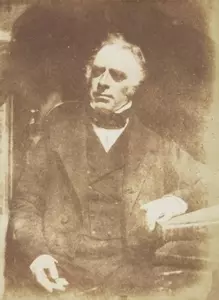James Grierson of Errol
To most readers the name James Grierson will be quite unknown. So too the village of Errol, the scene of his pastoral ministry. But if you have read Andrew Bonar’s Memoir of Robert Murray M’Cheyne you will in fact have heard of both for they are mentioned several times. Errol is only a few miles from Dundee, the scene of M’Cheyne’s ministry, and James Grierson, the Parish Minister, was one of M’Cheyne’s friends. It was in the Errol manse, for instance, that M’Cheyne spent the night before his ordination.
M’Cheyne’s ordination took place on the 24th of November 1836. By that date James Grierson had been minister in Errol for seventeen years. He would remain in Errol for a further thirty-nine years, first as Parish Minister till the Disruption in 1843, and then as minister of the Free Church until his death in January 1875. Robert Cowan of Perth, in a sermon preached shortly after his death, could refer to him as “the revered pastor who has been, since ever you can remember, a head and father among you”.
The beginnings
For the beginnings we need to go down to the southwest of Scotland, to the Solway Firth, and to the village of Ruthwell that lies between Dumfries and Annan. It was here that James Grierson was born in 1791. He was the son of godly parents. Reminiscing about his father, just a few days before his own death, he recalled some of his qualities as a Christian and how he “died in the peace of Jesus Christ”. Grierson also grew up under a godly ministry, that of Dr. Henry Duncan. For Duncan’s memory, says Cowan, Grierson “cherished a very high esteem and affection”.
Henry Duncan is still remembered today, though not for his evangelical ministry. Visitors to Ruthwell can visit the Savings Bank Museum, for example, and learn about the very first commercial savings bank in the world, opened by Henry Duncan in 1810. Among geologists he is known as the man who first discovered fossil footprints in Britain; among antiquaries as the restorer of the famous medieval Ruthwell Cross. He was Parish Minister of Ruthwell from 1799 till the Disruption, serving afterwards as minister of the Free Church till his death in 1846.
A little glimpse now of James Grierson’s early years. According to a friend, who knew him well, he was remarkable both for truthfulness and for prayer. “He would go out to a retired spot, taking his younger and only sister along with him, and pray; and he would preface the preparation of his school lessons also with prayer”. He also had a keen sense of sin. “My memory”, he says in one of his sermons, “goes back further than that of most; I can recall circumstances that occurred when I was two years of age – but I can remember no period of life without sin”.
Asked a few days before his death whether he knew the day of his conversion, his reply was, “No, I cannot; and that need be no stumbling block to you or to me; for, however desirable, it is not necessary; it is enough if we can say, ‘One thing I know, that whereas I was blind, now I see’; that’s the great point”. In his sermon Cowan adds, “It would seem, at least, that he must have come savingly to know the Lord in the season of youth – for he began his ministry as an evangelical preacher, at a day when evangelical doctrine and an evangelical spirit were far from being mere matters of course in entrants upon the sacred office”.
Early years in Errol
James Grierson was ordained to the gospel ministry in 1819. A few fragments have been preserved of the years that followed. Robert Cowan, for example, mentions harvest workers, known to himself, who used to speak about the sermons they heard in 1821 and 1822, “of which they had carried away fragrant memories”. Adam Philip, in his The Evangel in Gowrie, tells us that in 1826, and again in the years 1839 to 1843, “there were considerable stirrings”.
Philip gives us another little picture of the times in a letter to Grierson from Robert Murray M’Cheyne. It is dated 8th March 1839 and the subject is the forthcoming Church of Scotland’s Mission of Inquiry to the Jews. Andrew Bonar, at that time minister in not-too-distant Collace and one of Grierson’s fellow presbyters, had been appointed one of the deputation. But he would only consent to go on condition that he was allowed to provide “a qualified substitute to fill his place”. The fear was that the old minister, to whom Bonar was colleague, would refuse an assistant. “This would leave the parish in the same wilderness state in which Mr. Bonar found it, and Mr. Bonar would never consent to go on these conditions”. Would Grierson, then, “in the interests of Christ in that parish”, use his influence to ensure that the Presbytery authorised an assistant?
The Disruption
Much fuller information is available to us from the time of the Disruption. At a Free Church General Assembly in Inverness in the autumn of 1845 an appeal was made for ministers to prepare narratives of their experiences at the time of the Disruption, outlining their reasons for separating from the State and detailing the difficulties they had encountered. Of the thirty-seven manuscripts submitted one was from the pen of James Grierson of Errol. Extensive quotations from it can be found in Thomas Brown’s Annals of the Disruption.
The severance of their connection with the State meant that the men of 1843 had to leave their churches and manses and relinquish their stipends. For many, especially the country ministers, the sacrifice was great and, though gladly borne, was deeply felt. “My stipend”, Grierson writes, “was one of the largest belonging to a country charge; my family was rather numerous;…their education being not only unfinished, but, in the case of the younger members, not advanced beyond its earlier stages; while the length of time that we had enjoyed the advantages of a liberal income…all served to increase the painfulness of the sacrifice which, from a sense of duty, we were constrained to make”.
In connection with the leaving of the manse he speaks movingly of the hold that it had on his heart “from being”, he says, “the birthplace of all my children – the scenes of all their youthful joys and sorrows – and the house of mourning, from which I had conveyed the mortal remains of nearly one-half of their whole number to that resting-place on which my eye used to fall from Sabbath to Sabbath as I entered the house of God”.
In spite of the sympathy expressed at his final service as Parish Minister Grierson wasn’t expecting many to separate along with him to form the Free Church congregation. And certainly, as the time approached for the first service, Sunday 4th June, things didn’t look at all promising. The service was to be held on the green in front of the manse and by starting time only two widows had taken their seats. “But shortly afterwards”, he writes, “the people began to assemble in considerable numbers, when it appeared they had lingered in the neighbourhood, and had not taken their places till almost the last moment, as if they felt that their assembling in such a spot before the worship was about to begin was somewhat like invading the privacy of domestic life.”
He continues, “When I walked through the rows of the people, some seated on forms, some on the grass, and many of them standing…I was at first much overpowered”. Between six and seven hundred persons were present. Later, after the service was over, he was called up to the staircase window. “I saw the road from the manse to the village, a distance of fully two hundred yards, covered with people for nearly its whole extent as closely as they could walk. They were generally of the humbler classes…At this sight I burst into tears, thanked God, and took courage”.
Closing years
A few more fragments. From Robert Cowan we learn something of the effectiveness of his ministry to the young. “I have found again and again, in my own experience as a minister, that those coming from Errol, who had enjoyed the benefit of Dr. Grierson’s instructions and ministrations in early life, had both a respect for sacred things and the foundation well laid in religious knowledge, which made after-dealing a more easy, hopeful, and, in the highest sense, successful work”.
Grierson was the author of several books: On the Lord’s Supper; Earthly and Heavenly Things; The Divine Suppliant and Intercessor; Voices from the Cross; Scenes and Interviews with the Risen Saviour. Kenneth Moody-Stuart of Moffat, who had vivid memories of listening, as a boy and teenager, “to the word of life clearly, beautifully, and faithfully preached” by Grierson, notes how his published writings all “circle very closely around the Person of the Lord Jesus”. He asks, “May not the reverent and loving familiarity with his Lord, implied in the preparation and production of such works, go a good way to account for what seemed special in the close intercourse and happy confidence which characterised the closing weeks and last hours upon earth of their author?”
And it was special. Cowan says, “I know not, nor have I heard of any death, in the course of my lifetime, that was more pervaded and penetrated with the presence of Him who is ‘the life’”. Asked by one of his children, as the end approached, “you are quite happy, aren’t you father?” he replied, “Oh yes, quite happy: I have every assurance: the work for me is all done, and the work in me is nearly so”. Moody-Stuart would later tell his congregation that “his desire to be freed from bodily struggle at last was granted him; and his last prayer at family worship, for ‘the great blessing of a peaceful death, and the still greater blessing of an abundant entrance and a lively hope’, was to the full answered”.


